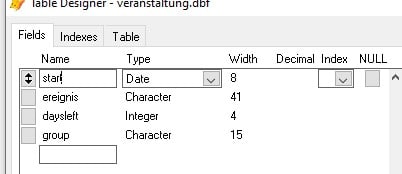What is a quick way to add one year to a date?
Example:
In a table the date-field "Datum" contains 08.06.2023 (german dd-mm-yyyy)
I want to replace all fields in a table containing 2023 into 2024
So for the example the data should be 08.06.2024 then.
It is a table with birthdays.
I know that a date can be splitted into day(date()), month(date()), year(date())
and it would be possible to create a string of all this, but then the days < 10 have to get a "0"
and the string has to be converted into a date, and the string has to have "."
Adding 365 days to a date? Then a leap year has to be considered.
Sounds all too elaborate to me.
In a replace-command only dates at the end of February has to be considered because of an eventual leap year.
I can imagine that there is an easier way.
Can you help?
Thanks
Klaus
Peace worldwide - it starts here...
Example:
In a table the date-field "Datum" contains 08.06.2023 (german dd-mm-yyyy)
I want to replace all fields in a table containing 2023 into 2024
So for the example the data should be 08.06.2024 then.
It is a table with birthdays.
I know that a date can be splitted into day(date()), month(date()), year(date())
and it would be possible to create a string of all this, but then the days < 10 have to get a "0"
and the string has to be converted into a date, and the string has to have "."
Adding 365 days to a date? Then a leap year has to be considered.
Sounds all too elaborate to me.
In a replace-command only dates at the end of February has to be considered because of an eventual leap year.
I can imagine that there is an easier way.
Can you help?
Thanks
Klaus
Peace worldwide - it starts here...


